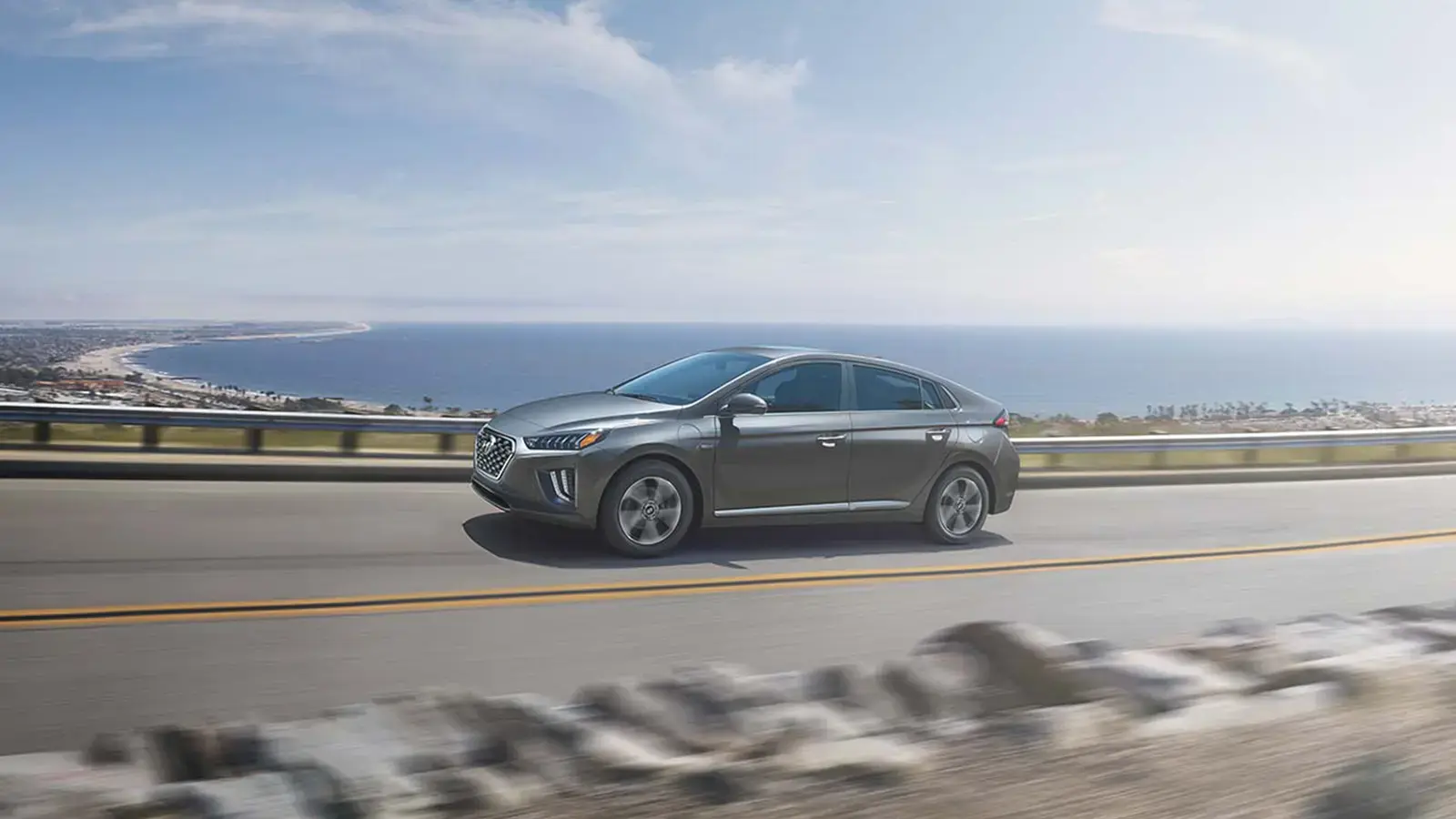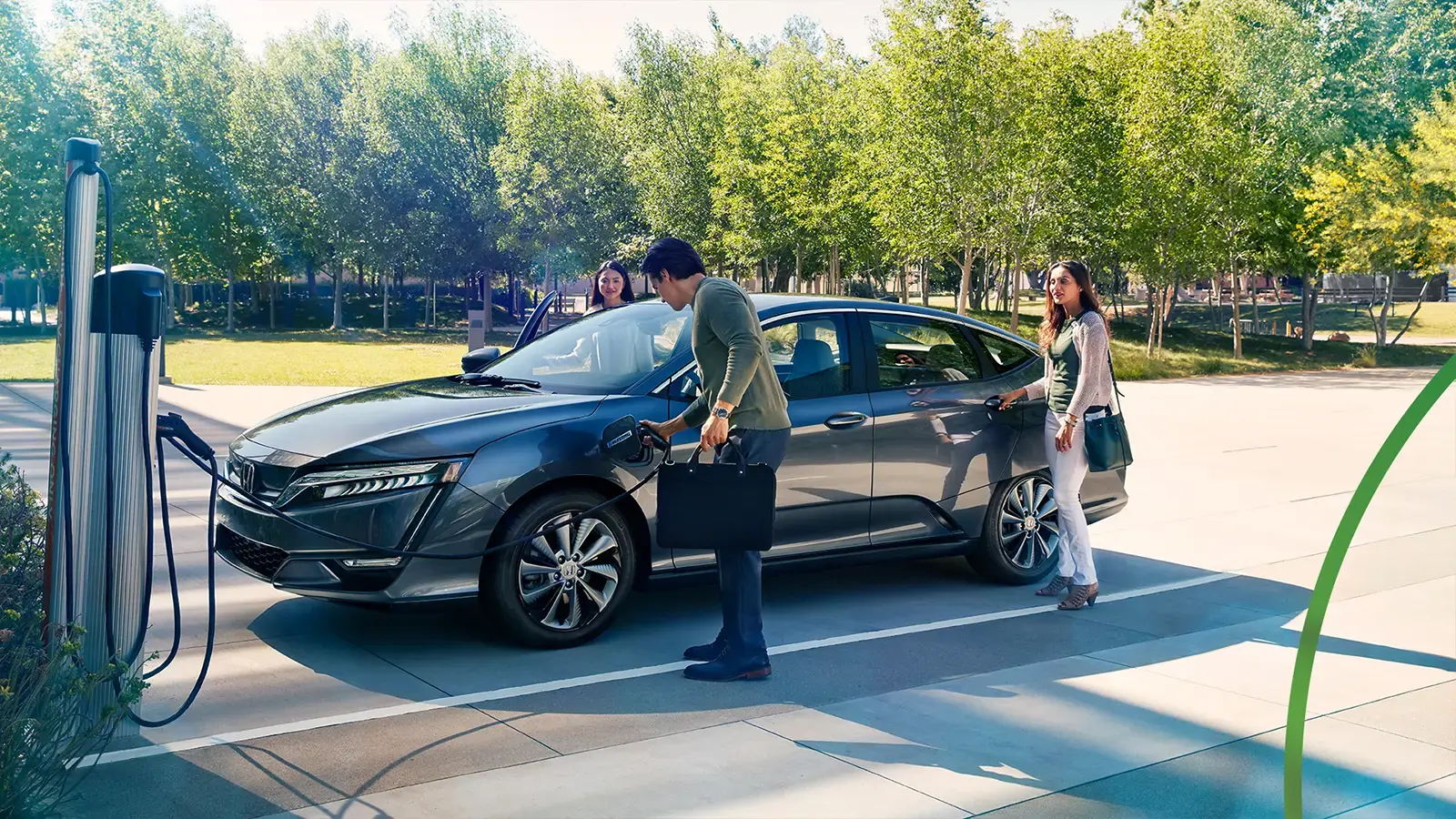What Is a Plug-In Hybrid?
A plug-in hybrid electric vehicle (PHEV) is a type of car that combines a traditional internal combustion engine with an electric motor and a rechargeable battery. It provides the flexibility of gasoline for longer trips and the efficiency of electricity for everyday driving.
How a Plug-In Hybrid Works
Plug-in hybrids operate in two main modes: electric and hybrid with gas.
- Electric mode lets the car drive using only battery power. Most models can travel between 25 and 60 miles on electricity alone, which is ideal for commutes, errands, and short trips.
- Hybrid mode begins when the battery is depleted. The gasoline engine works together with the electric motor to keep the vehicle moving, giving you the extended range of a conventional car but with excellent fuel economy.
Unlike traditional hybrids, plug-in hybrids can be plugged in to recharge their battery, which allows you to begin each day with a full charge and maximize electric-only miles.
Key Components
Every plug-in hybrid currently includes:
- An electric motor powered by a lithium-ion battery
- A gasoline engine that takes over when the battery is low
- An onboard charger and charging port to plug into home or public chargers
- A regenerative braking system that helps recharge the battery by capturing energy during braking
These systems work automatically to deliver the best balance of performance and efficiency without requiring driver input.
Electric Range and Efficiency
One of the main advantages of a plug-in hybrid is the ability to complete most short trips using electricity alone. This helps many drivers significantly reduce gasoline use during daily driving. On longer drives, the gasoline engine ensures you can keep going without stopping to charge.
Typical figures for modern plug-in hybrids include:
- Electric-only range: 25 to 60 miles
- Combined range (electric and gas): 400 to 600 miles or more
- Charging time: 2 to 6 hours, depending on battery size and charging level
Because electricity is typically less expensive than gasoline, plug-in hybrids can help reduce your overall fuel costs.

Charging a Plug-In Hybrid
Charging is simple. Most plug-in hybrid drivers use a standard wall outlet (Level 1) to charge overnight at home. For faster charging, a 240-volt Level 2 charger can refill the battery in just a few hours. Many public charging stations are also compatible with PHEVs.
Most plug-in hybrids do not support DC fast charging, but their smaller batteries allow for quicker full charges with standard options.
Why Choose a Plug-In Hybrid?
Plug-in hybrids are a smart choice if you want to experience electric driving without giving up the familiarity of gasoline backup. Benefits include:
- The ability to complete short trips without using gasoline
- Extended range for road trips without charging interruptions
- Lower fuel costs and reduced emissions
- Access to potential incentives
- A flexible and familiar driving experience
If you're looking for a practical step into the world of electrified driving, a plug-in hybrid may be the ideal solution.
Your Journey Starts Here
Continue exploring the world of plug-in hybrids:
Discover Next: How Plug-In Hybrids Work →












